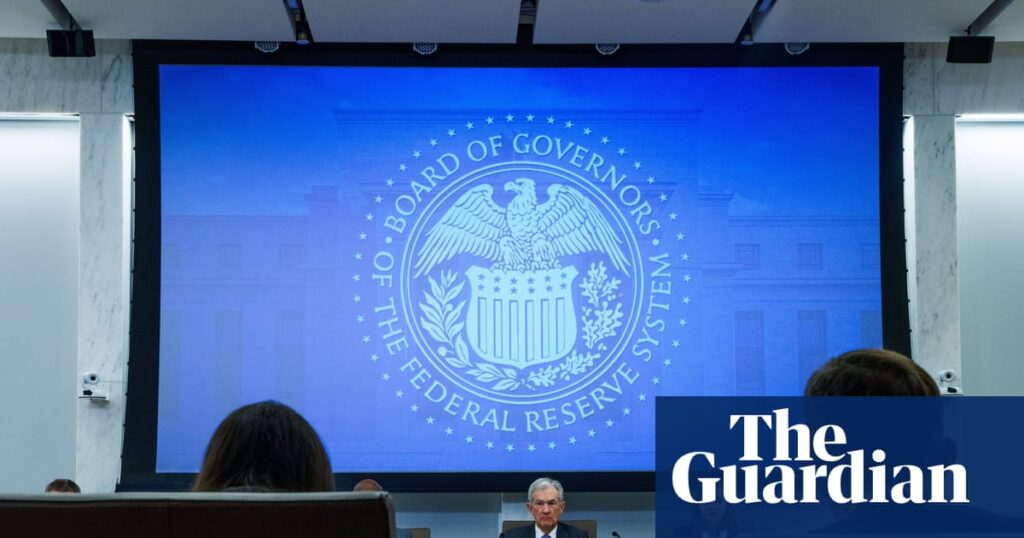The US Federal Reserve cut interest rates on Wednesday, the second rate cut this year amid economic turbulence from the federal government shutdown and Donald Trump’s tariffs.
The decision to cut the Fed’s benchmark interest rate by a quarter point to a range of 3.75% to 4% comes at an extraordinary moment for the central bank. The Fed has been under immense pressure from Donald Trump to cut rates despite persistent inflation and no longer has access to key data thanks to the shutdown.
The Fed chair, Jerome Powell, said on Wednesday that “there is no risk-free path” for the Fed to take with the labor market cooling and prices going up.
Two members of the committee voted against the quarter-point increase. Stephen Miran, whom Trump appointed days before the committee’s last meeting in September, once again voted against the majority, arguing that the rate cut should be larger. Jeffrey Schmid, the president of the Kansas City Fed, also voted against the majority, though he preferred no change to the interest rate.
Powell noted that much of the disagreement among the 12-person committee was not about this most recent interest rate cut but how the committee should proceed in December at its next meeting.
The Fed’s goal is to use interest rates to both keep unemployment low and minimize price increases. Powell noted that the majority of Fed officials are now more concerned about the labor market than rising inflation, but opinions on the path forward differ widely.
“We have one tool. We can’t do both of those at once. People have different forecasts … and they have different levels of risk aversion,” Powell said.
Trump’s crackdown on migration is affecting the labor supply, though demand for labor has “gone down a little more than supply”, which is why the majority ultimately settled on a rate cut, said Powell.
The ongoing federal government shutdown, now one of the longest in US history, has also complicated the Fed’s job. Collection of important economic data has been indefinitely halted as employees at the Bureau of Labor Statistics (BLS) are furloughed during the shutdown.
The Fed typically studies BLS data to determine labor market conditions, including the number of new jobs added to the economy and the current unemployment rate. The last jobs report was released in early September, before the shutdown, and gave a relatively bleak snapshot of the jobs market in August. The number of jobs added to the economy in August was down by more than 100,000 since the spring, and unemployment crept up to 4.3% – the highest since 2021.
Though the BLS was scheduled to release September’s job market report in early October, it suspended its publication once the shutdown started. The private payroll firm ADP reported earlier this month that the private sector cut 32,000 jobs in September, a sign that the job market is continuing to slow.
Though the BLS’s jobs report has been suspended, the bureau still released its inflation report for September that showed that prices are going up, albeit slowly. Prices rose 3% over the last year, the highest since January. In April, the annual inflation rate was 2.3%, the lowest it has been since 2021. The Fed’s target inflation rate is 2%.
Asked about how the continuation of the government shutdown could affect the Fed’s next meeting, Powell said the central bank had other means of getting a snapshot of the economy it can use to determine its next move. But, he noted, “it is hard to say.”
The next meeting is “six weeks aways, so we don’t know what we are going to get”, he said.

